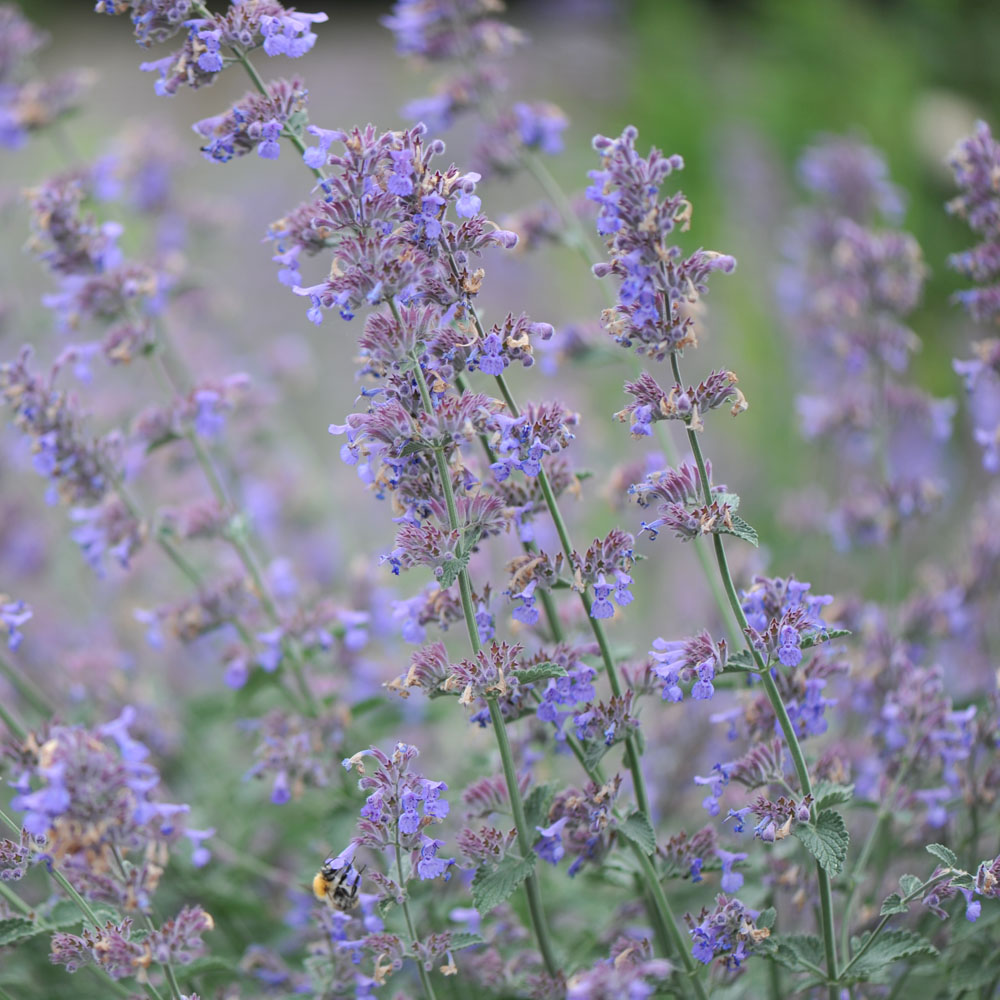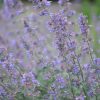Description
Nepeta ‘Six Hills Giant’ is a perennial herb with fragrant grey-green foliage and tall spikes of lavender-blue flowers. This hardy plant can grow up to one metre in height and width, forming a dense mound of foliage that makes it perfect for filling gaps in borders and edging paths. The showy flowers bloom from late spring to early autumn, attracting bees and butterflies to your garden. Nepeta ‘Six Hills Giant’ thrives in full sun or partial shade and prefers well-drained soil. It also makes an excellent companion plant to other sun-loving perennials like Rudbeckia, Echinacea, and Salvia, as well as shrubs like Buddleja and Roses.
Key Facts
- Common Name(s):Catmint ‘Six Hills Giant’
- Hardiness:Fully hardy
- How big will I get? Nepeta ‘Six Hills Giant’ can grow to a height of 1m and a spread of 1m.
- Did You Know That:Nepetalactone is the chemical in Nepeta that attracts cats?
Plant Calendar
A rough guide to how this plant will change through the year.
| Jan | Feb | Mar | Apr | May | June | July | Aug | Sept | Oct | Nov | Dec | |
| Flowering Time |  |
 |
 |
 |
||||||||
| Foliage Colour |   |
  |
  |
  |
  |
  |
  |
  |
  |
| J | F | M | A | M | J | J | A | S | O | N | D |
 |
 |
 |
 |
||||||||
  |
  |
  |
  |
  |
  |
  |
  |
  |
Care Guide

Soil Requirements
Nepeta ‘Six Hills Giant’ prefers soil with good drainage and does not tolerate standing water. This plant can grow in soil with a wide range of pH levels, it is not picky about the pH level of the soil.

Best Position
Nepeta ‘Six Hills Giant’ can handle either an exposed or a sheltered position and can cope with either full sun or partial shade.

Maintenance
Nepeta ‘Six Hills Giant’ should be trimmed once the plant has finished flowering in early Autumn. This will keep the plant nice and compact. Not totally necessary however you could end up with some woody growth with no flowers around the base of the plant if you neglect this.

Pest, Diseases and Wildlife
Nepeta ‘Six Hills Giant’ can have problems with leafhoppers, it can be vulnerable to certain diseases such as powdery mildews. It is also known to attract bees, butterflies and other pollinators. It is not considered to be toxic.







